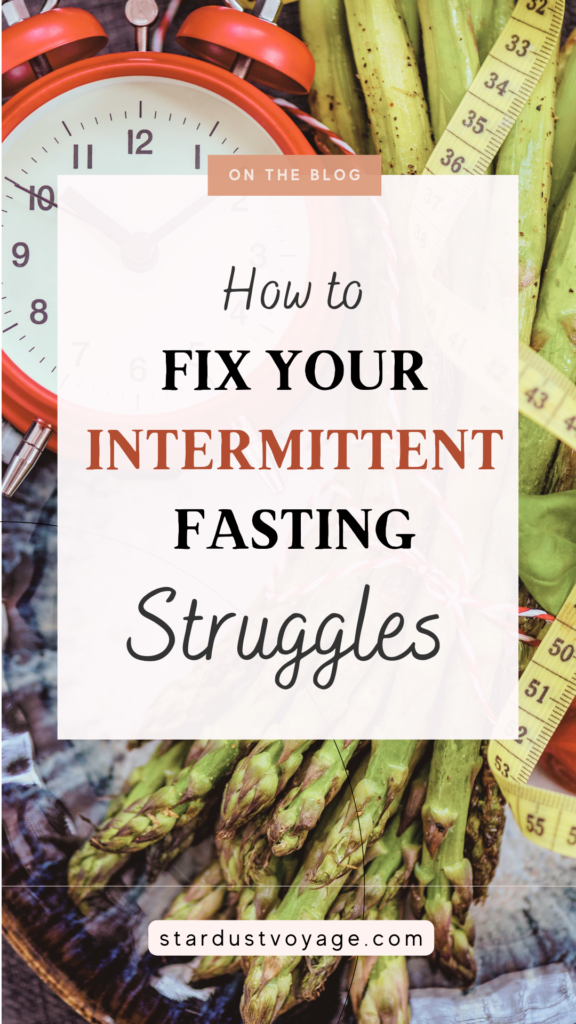Intermittent fasting (IF) has gained significant popularity as a flexible and effective way to lose weight and improve overall health. Many people are drawn to it because it doesn’t require complicated meal plans or restrictive diets—just a shift in when you eat. But what happens when you’re weeks into your fasting routine and still not seeing the results you hoped for?
If you’ve stuck to your fasting window but haven’t noticed the scale move or feel the health benefits others rave about, you’re not alone. Intermittent fasting isn’t a one-size-fits-all solution, and there are several factors that can impact your progress. Often, it’s about making small adjustments rather than abandoning the method altogether. This guide will walk you through some of the common pitfalls and how to troubleshoot them, helping you get back on track to meet your goals.
Whether it’s related to your eating habits, the fasting window itself, or how you’re approaching other aspects of your health, these practical solutions can make all the difference in breaking through a plateau. Let’s dive into what might be holding you back—and how to fix it.

#1. Reevaluate Your Fasting Window
One of the most common reasons people don’t see progress with intermittent fasting is that their fasting window might not be aligned with their body’s needs. While popular fasting methods, like 16:8 or 18:6, work for many, they aren’t necessarily optimal for everyone. It’s important to remember that your metabolism, activity levels, and even your sleep patterns can influence which fasting schedule is best for you.
If you’re not seeing results, try experimenting with different fasting windows. For instance, you could extend your fasting period by an hour or two, or switch to a different routine like 20:4 or alternate-day fasting. Keep in mind that your body might need a bit more time to fully adjust, so give yourself a week or two after making changes to assess their impact. Tracking how you feel—your energy levels, hunger cues, and mood—can also give you valuable insight into whether a different fasting window is helping.
The key is to remain flexible and open to tweaking your approach based on what works best for your unique lifestyle and body.
#2. Optimize Your Nutrition During Eating Windows
When diving into intermittent fasting, it’s vital to remember that the quality of your meals during eating windows is just as crucial as the timing. To truly make the most of your fasting journey, consider the foods you choose to nourish your body. It’s not just about what you can eat; it’s about ensuring that every bite counts.
Focus on incorporating whole, unprocessed foods that are rich in nutrients. Think lean proteins, vibrant vegetables, wholesome grains, and healthy fats. For example, grilled chicken with a side of quinoa and roasted vegetables creates a satisfying meal that fuels your body without leaving you feeling heavy. Protein is especially important as it helps maintain muscle mass while you’re in a calorie deficit. Pair it with fiber-rich foods to keep hunger at bay and promote a sense of fullness.
Avoid highly processed snacks or sugary treats that might seem tempting. These can lead to blood sugar spikes and crashes, leaving you feeling sluggish and unsatisfied. Instead, prioritize meals that nourish your body and stabilize your energy levels throughout the day. By making thoughtful choices about your nutrition, you’re not only enhancing your fasting experience but also setting the stage for achieving your health and wellness goals.
#3. Limit Hidden Calories in Beverages
When practicing intermittent fasting, it’s easy to overlook the impact of beverages on your overall caloric intake. Many drinks, even those that seem harmless, can contain hidden calories that disrupt your fasting goals. To ensure that you’re truly benefiting from your fasting window, it’s essential to be mindful of what you consume beyond solid foods.
Start by examining your beverage choices. Sugary drinks like sodas, sweetened coffees, and juices can pack a surprising amount of calories. For example, a single 12-ounce can of soda can contain around 150 calories or more—calories that don’t provide any nutritional value. Instead, opt for zero-calorie or low-calorie alternatives like water, herbal teas, or black coffee. These options can hydrate your body without adding extra calories, allowing you to stay on track with your fasting regimen.
Additionally, consider the portion sizes of your beverages. A seemingly innocent smoothie can quickly turn into a calorie bomb if it’s packed with fruits, yogurt, and sweeteners. While smoothies can be nutritious, moderation is key. When blending your favorite ingredients, be cautious with portions to keep your calorie count in check.
#4. Ensure Adequate Hydration
Staying hydrated is crucial during intermittent fasting, yet it’s often an overlooked aspect of this dietary approach. Adequate hydration supports your body’s metabolic functions, helps curb hunger, and can even enhance energy levels throughout your fasting period.
To optimize hydration, aim to drink plenty of water throughout the day. It’s beneficial to set a goal for your daily water intake—generally, 8-10 cups (about 2-2.5 liters) is a good benchmark, though individual needs may vary based on activity levels and climate. Carrying a reusable water bottle can serve as a visual reminder to drink more frequently, making it easier to reach your hydration goals.
Incorporating hydrating foods into your eating windows can also contribute to your overall fluid intake. Foods like cucumbers, watermelon, oranges, and leafy greens are not only delicious but also packed with water. These foods can help you feel fuller, allowing you to maintain your fasting routine more comfortably.
It’s also important to listen to your body. If you’re feeling fatigued, lightheaded, or unusually hungry, these may be signs of dehydration. In such cases, drink a glass of water and wait a moment—sometimes, thirst can be mistaken for hunger.
Remember that water is not just a necessity; it’s a valuable ally in your intermittent fasting journey, helping you feel your best while working towards your health goals.
#5. Incorporate Regular Physical Activity
Integrating regular physical activity into your routine can significantly enhance the benefits of intermittent fasting. Exercise not only boosts metabolism but also helps to maintain muscle mass while you lose fat. The combination of fasting and exercise can lead to improved body composition and increased overall well-being.
Start by identifying the type of physical activity you enjoy. Whether it’s brisk walking, jogging, cycling, yoga, or strength training, engaging in an exercise routine you find enjoyable is key to sustainability. Aim for at least 150 minutes of moderate-intensity aerobic activity each week, combined with muscle-strengthening activities on two or more days.
Timing your workouts around your eating windows can also be beneficial. Some people find that exercising during the fasting period increases their endurance and focus, while others prefer to work out after breaking their fast to refuel their bodies with nutritious foods. Experiment with different timings to see what works best for you.
In addition to structured workouts, look for opportunities to be active throughout the day. Simple changes, like taking the stairs instead of the elevator, going for short walks during breaks, or even incorporating stretching sessions into your routine, can make a significant difference. These small, consistent efforts can accumulate, leading to improved fitness levels and enhanced energy.
Moreover, combining strength training with aerobic exercises can be particularly effective. Resistance training helps build lean muscle, which can elevate your resting metabolic rate, making it easier to burn calories even while at rest.
#6. Prioritize Sleep and Stress Management
When it comes to intermittent fasting, sleep and stress management are often overlooked yet critical components that can impact results. Insufficient sleep and high levels of stress can wreak havoc on hormonal balance, leading to increased hunger and cravings, making it challenging to stick to your fasting routine.
Aiming for 7-9 hours of restful sleep each night is essential for regulating hormones that control appetite. Establishing a consistent sleep schedule can work wonders. Consider creating a calming bedtime routine: dim the lights, limit screen exposure, and engage in relaxing activities like reading or gentle stretching. These practices can significantly enhance the quality of your sleep.
Managing stress is equally crucial. Chronic stress elevates cortisol levels, which not only increases appetite but also encourages fat storage. Incorporating mindfulness techniques such as meditation or deep breathing exercises can help mitigate stress. Finding time for hobbies, physical activity, or simply spending time in nature can also provide a mental break and a sense of joy, supporting your commitment to fasting.
#8. Be Patient with Your Body’s Adjustments
Intermittent fasting can be a transformative experience, but it’s important to recognize that your body needs time to adapt. Just like any significant lifestyle change, adjusting to new eating patterns can take several weeks. During this period, it’s common to experience fluctuations in energy levels, hunger signals, and even digestive changes.
Patience is key. Understanding that your body is recalibrating can help you maintain a positive mindset. Instead of getting frustrated with the scale, focus on how you feel overall. Are you experiencing more stable energy levels during fasting hours? Are you becoming more in tune with your hunger cues? These subtle signs of progress are often more telling than the number on the scale.
Moreover, remember that every individual’s journey is unique. What works for one person may not yield the same results for another. Embracing this individuality can alleviate pressure and encourage a more relaxed approach to the process.
Stay committed to your fasting plan, but also allow your body the grace to adjust at its own pace. Consistency, combined with a patient mindset, will ultimately lead you to the results you seek while fostering a healthier relationship with food and your body.
Final Thoughts
Navigating the journey of intermittent fasting can feel overwhelming at times, especially when the results seem slow to manifest. However, it’s essential to remember that every small step counts. Each day you commit to this lifestyle is a step toward better health, greater self-awareness, and a deeper understanding of your body’s needs.
As you troubleshoot and adjust your approach, be kind to yourself. Celebrate the progress you’ve made, whether it’s improved energy levels, enhanced focus, or a newfound appreciation for nourishing foods. Each of these milestones is significant and deserves recognition.
It’s also important to stay adaptable. Life is filled with changes, and your fasting strategy can evolve along with you. Use the insights from this journey to tailor a plan that feels right for you. You are not alone in this process; many have walked this path and found success.
Embrace the journey with an open heart and mind. Trust that with patience and persistence, you will find the balance and results you are seeking. Here’s to your health and well-being—keep moving forward, and remember, every day is a new opportunity to nourish yourself in mind, body, and spirit.




